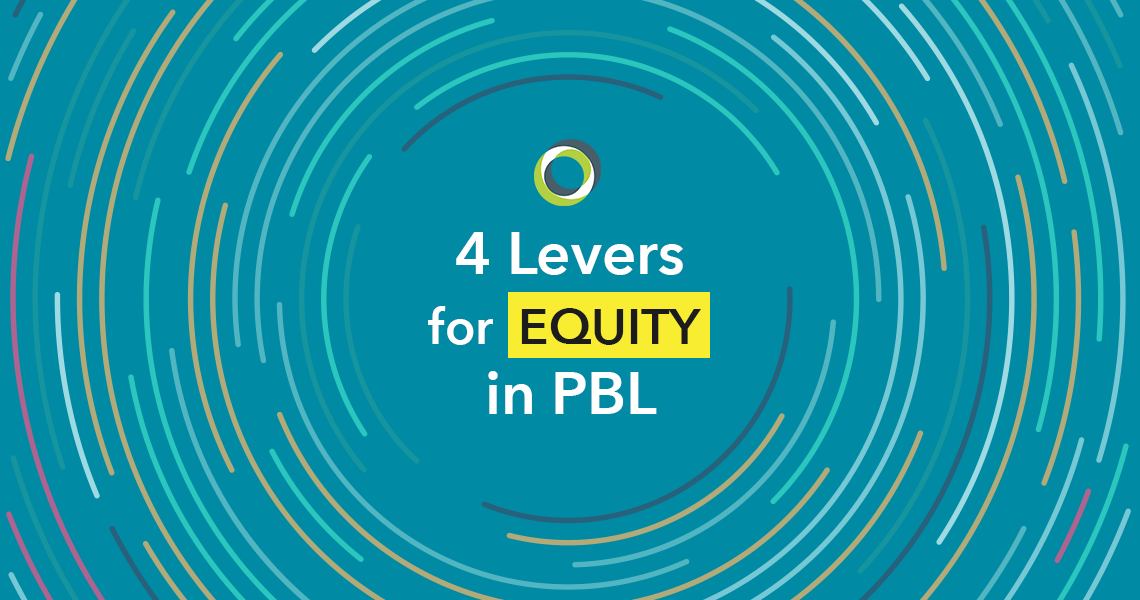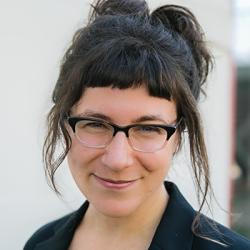
“Educational equity means that each child receives what they need to develop to their full academic and social potential.” — National Equity Project
Here at PBLWorks, we believe that all students, no matter where they live or what their backgrounds, should have access to meaningful learning experiences that help them grow. We envision a world in which race, ethnicity, and other aspects of identity do not predict the opportunities available to young people.
And we know that Gold Standard PBL, when implemented with an intentional equity focus, is one powerful way to work towards this vision.
An intentional focus on equity matters especially when we are all working hard to push against what author and activist bell hooks calls “the narrow boundaries that have shaped the way knowledge is shared in the classroom.” So, over the past several years, our team has been exploring the question, “What are the specific mindsets and priorities that PBL teachers can ‘leverage’ to provide equity-centered and impactful learning experiences for all students?”
Now, we're excited to share 4 key “levers” that promote equity in PBL.
These levers amplify the power of the Essential Project Design Elements and the Project Based Teaching Practices, and ensure they are used in ways that reach all learners. Because equity work is an ongoing process rooted in curiosity and ongoing reflection, the levers are each supported by a guiding question.
1. Knowledge of Students
How can I learn about (and build meaningful relationships with) my students to design and facilitate projects that capture their interest, honor their strengths and identities, and meet their needs?
This lever is about the authentic ways in which we get to know our students, their families, and their communities, and how we ensure that the projects in our classrooms are relevant to students’ lives and rooted in a meaningful context. It includes bringing an asset-based lens to our work with students: knowing each student well enough to be able to see and build on the unique gifts they bring into the classroom. It also includes teaching a historically accurate and inclusive curriculum that addresses the intellectual legacies of Black and Brown students: as Lisa Delpit writes, “the fact that people who look like them created much of the knowledge base of today’s world.”
Knowing students well includes staying curious about their needs so we can effectively address any barriers preventing them from accessing learning in our classrooms. Finally, this lever requires educators to learn about ourselves-- including the perspectives, cultural lenses, and biases we each carry with us-- and consider how our identities and experiences shape the ways we connect with our students.
What it can look like:
- Building relationships with students by asking them questions, implementing activities that invite them to share what they care about, and welcoming community involvement (including project partners, guest speakers, and audience members for public presentations)
- Designing projects that are embedded in students’ communities, that connect to students’ interests and identities, and that address multiple modes of knowledge
- Using varied and frequent learner-centered formative assessments to inform instructional moves
2. Cognitive Demand
How can I hold high intellectual expectations and provide appropriate support for all students, in order to advance each student’s academic mindset and cognitive growth?
Cognitive demand is about providing rigorous challenge and appropriate support to all learners so that every student in our classrooms is engaged in meaningful and complex intellectual work. It is about building what Zaretta Hammond calls “learning partnerships” with students, so that they persist through challenges and develop a sense of their own efficacy as learners. An intentional focus on cognitive demand is critical to countering the racialized disparities in teacher expectations for student learning.
What it can look like:
- Designing rigorous project tasks that require students to think in complex ways about significant content
- Cultivating a “warm demander” stance in our interactions with students, providing challenge and support in a way that communicates care and a belief in students’ capabilities
- Providing scaffolds and coaching strategically in order to help students experience “productive struggle” and to support their growth
3. Literacy
How can I provide experiences that deepen students’ capacity to read, write, listen, and speak across a range of contexts and disciplines?
Literacy is an equity issue. And it's been proven that PBL, when implemented effectively, can support students’ literacy development. Projects can provide rich and authentic opportunities to build students literacy skills and incorporate meaningful scaffolds that help students engage in reading, writing, listening, and speaking for a variety of purposes and audiences.
What it can look like:
- Identifying specific literacy learning targets for each project, appropriate to student need, purpose, and discipline, and designing projects to support student learning of the targeted literacy skills
- Incorporating authentic, accessible, discipline-appropriate, and culturally relevant texts (such as scientific journal articles, editorials, data visualizations, or first-person historical accounts) into project learning experiences, and providing appropriate scaffolds and protocols to help students make meaning of these texts
- Incorporating frequent and varied opportunities for students to engage in listening, speaking, reading, and writing throughout a project, and building a culture of reflection and revision about literacy practices.
- Valuing the rich and diverse language practices that students bring into the classroom. Exploring the relationship between language and power, and how context, purpose, and audience might inform our approaches to communication at any given moment.
4. Shared Power
How do I cultivate student voice, choice, agency, and interdependence in our classroom?
Shifting our instructional approach to a collaborative, learner-centered model can redistribute power in the classroom. In equity-centered PBL classrooms, we nurture “power with” rather than “power over” dynamics among students and teachers, and recognize that supporting one another’s learning, growth, and belonging is mutually beneficial. Teachers learn alongside our students, and, when possible and appropriate, students play an active role in shaping how learning happens.
What it can look like:
- Students and teachers co-create classroom norms and practices, and use restorative processes for addressing harm and resolving conflict
- Projects include ample opportunities for students to make choices about their learning and to express themselves
- Learning activities are structured to support mutuality and interdependence rather than competition and individual ranking
As you can probably imagine, the four levers are interrelated.
For example, knowing our students better can help us better support their literacy development; nurturing shared power and mutual support makes it more likely that students will persist through cognitively demanding tasks.
Hopefully, you’ll find the levers useful as you think about implementing PBL in an equity-centered way. These “equity levers” are now being infused throughout our current and future PBLWorks workshops. And we encourage you to use the questions to reflect on your own practice.
Thank you to the many researchers and practitioners whose work informed the development of these levers. Our team is excited to work with our partners in schools around the world to continue learning about how to deepen the impact of PBL on the learning of all students.
References & Recommended Reading
- Lisa Delpit, Multiplication is for White People: Raising Expectations for Other People's Children.
- Zaretta Hammond, Culturally Responsive Teaching and the Brain.
- Gloria Ladson-Billings, The Dreamkeepers: Successful Teachers of African American Children.
- Gholdy Muhammad, Cultivating Genius: An Equity Framework for Culturally and Historically Responsive Literacy.
- Django Paris, Culturally Sustaining Pedagogies: Teaching and Learning for Justice in a Changing World.
This article includes contributions from Charity Marcella Moran, Ed.S., a member of our National Faculty, and Stanley Richards, our Director of Curriculum-Based Professional Learning, along with ideas from many current and former members of our staff and faculty.
You might also be interested in...
PBL 201 Workshop: Equity & Gold Standard PBL
This 3-day advanced PBL workshop supports experienced practitioners in aligning PBL practices with the principles of culturally responsive teaching.
Pre-requisite: PBL 101 Workshop
View upcoming dates

